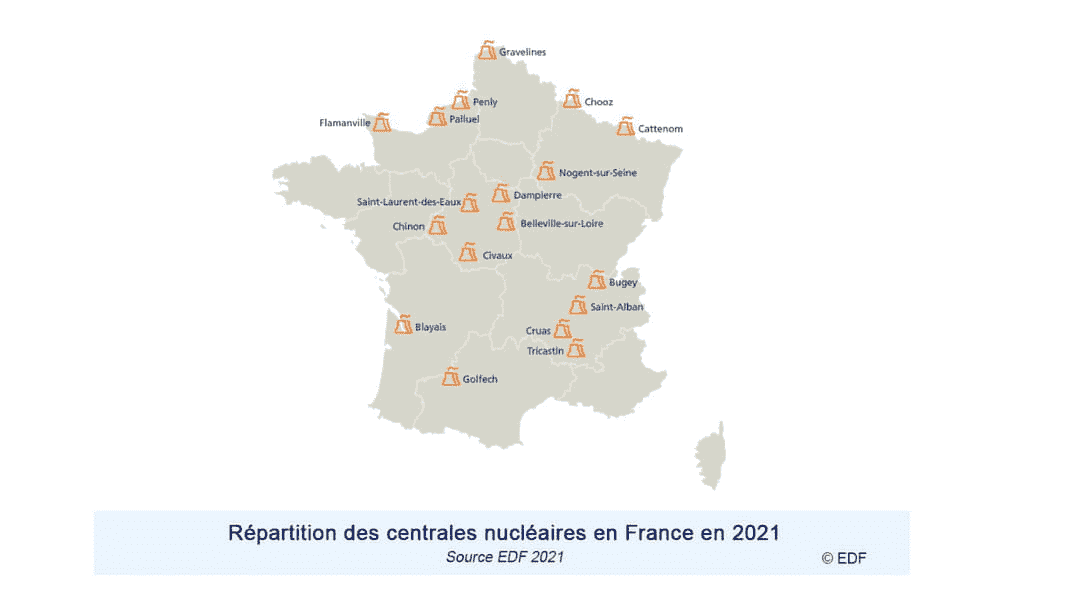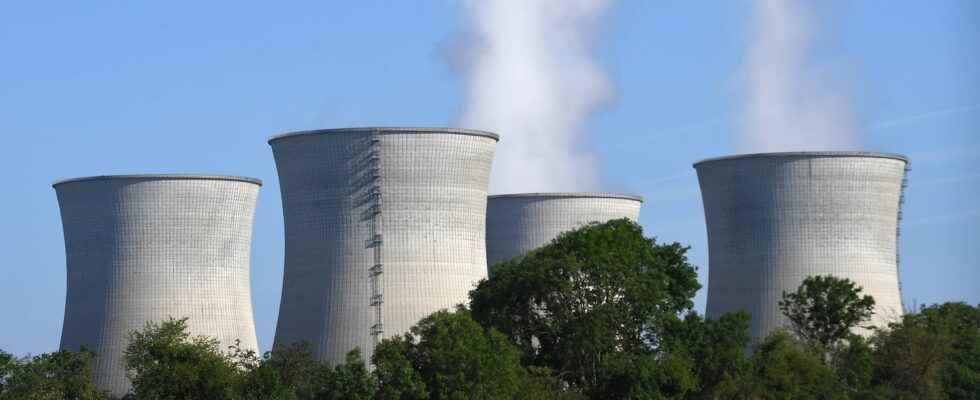EDF. The group has announced the reduction of its electricity production forecasts for 2022, due to a longer shutdown of four reactors. Are power cuts to be expected for this winter?
[Mis à jour le 4 novembre 2022 à 14h28] In a communicated published Thursday, November 3, EDF has revised downwards its estimate of nuclear production for the year 2022. Indeed, until then, the company planned to produce between 280 and 300 TWh (terawatt hours) in 2022. From now on, the range , which had already been lowered since the beginning of the year, should instead be between 275 and 285 TWh. Over the first nine months of the year, nuclear production in France amounted to 209.2 TWh, or 59 TWh less than in the same period in 2021.
EDF explains this by a longer shutdown than expected of four reactors, which were to be restarted during the month of November, for corrosion problems, and because of a social movement during the fall. In mid-October, management had postponed the restart of five of them in the context of a strike for wages on certain sites, before an agreement was signed two weeks later. At the end of a Defense Council on energy organized at the Elysée on September 2, the Minister for Energy Transition, Agnès Pannier-Runacher, had indicated that “EDF is committed to restarting all its reactors for this winter”, while twenty-four were still shut down at the end of October.
With this drop in production announced by the company, the fear of power cuts is ever more present. Certain areas of France are considered “energy peninsulas”: “They are less interconnected to the network and have almost no means of production of their own”, explained Clément Le Roy to France info, partner in charge of energy at Wavestone, on September 11th. The most affected departments would be Alpes-de-Haute-Provence (04), Hautes-Alpes (05), Alpes-Maritimes (06), Bouches-du-Rhône (13), Côtes-d’Armor (22), Finistère (29), Ille-et-Vilaine (35), Morbihan (56), Var (83) and Vaucluse (84).
Also, Philippe Page Le Mérour, secretary of EDF’s central corporate social committee, whose remarks were relayed by Free lunch, indicated on October 13: “If we have a normally cold winter, or very cold, we will not be able to do without load shedding”, leaving little hope of no power cut for this winter. Until now, EDF had explained that the question would only arise in the event of a very cold winter.
EDF has therefore announced a reduction in its production forecasts for 2022, in particular due to the prolonged maintenance of several nuclear reactors. Thus, the four reactors concerned by an extended shutdown are Cattenom 1 and 3, Penly 2 and Chooz B1. The reopenings of Chooz B1 and Penly 2 have been postponed to January 29, while these reactors were to restart on November 13 and 23 respectively. For their part, Cattenom 1 and 3, which were to be relaunched on November 17 and December 11, saw their recovery postponed to February 26, 2023.
Also, the social movement in the fall in the power stations led to reductions in nuclear production or postponements of work for certain reactors. In mid-October, management had postponed the restart of five of them in the context of a strike for wages on certain sites, before an agreement was signed two weeks later.
France has 56 nuclear reactors. In France, it is the leading source of electricity production and consumption. Reactors have different power levels. Thus, four have a power of 1,400 MW, 20 have a power of 1,300 MV and 32 have a power of 900 MW.

According to EDF, 24 nuclear reactors were still shut down at the end of October. The main reason that explains this unavailability of the nuclear fleet had not been anticipated. Cracks were discovered on the piping of one of the reactors of the Civaux power plant in the fall of 2021, then on other reactors. This phenomenon, called stress corrosion, surprised engineers who thought that the material chosen for these circuits was not very sensitive to this risk.
